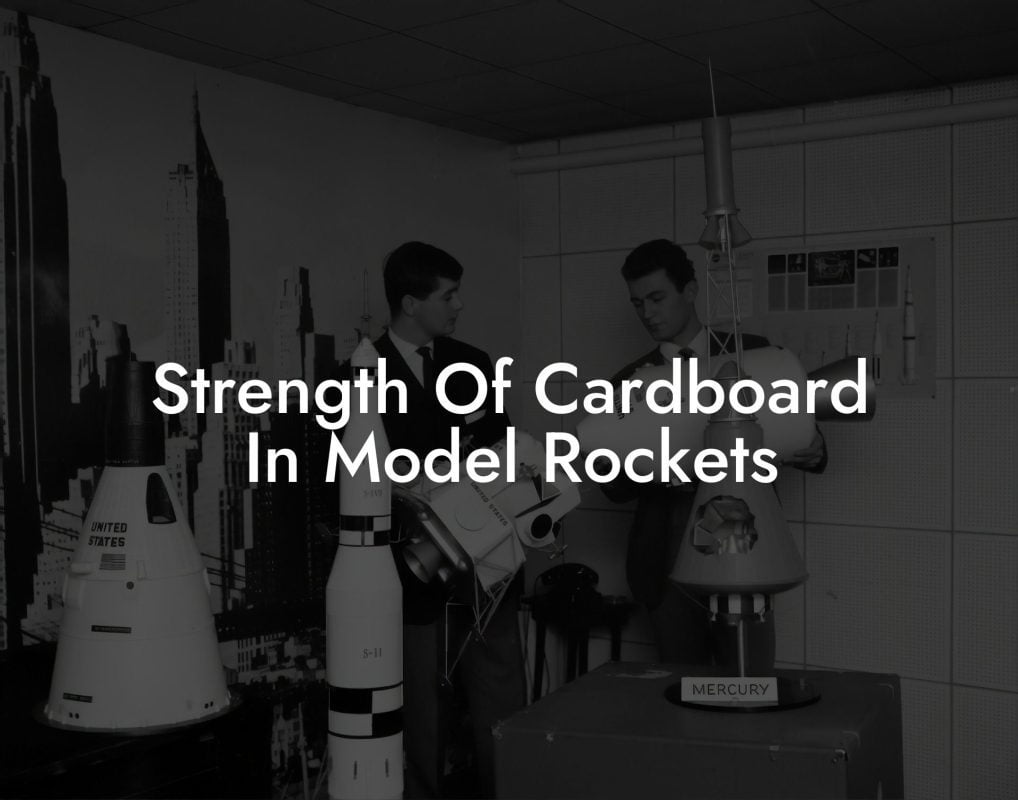Get ready to blast off into the world of model rockets! Painting your model rocket is an essential step in bringing your creation to life. With the right techniques and materials, you can transform your rocket from a plain, bland piece of plastic into a stunning work of art that's sure to turn heads. In this comprehensive guide, we'll take you through the basics of model rocket painting, from preparing your rocket for paint to adding those all-important finishing touches.
Quick Links to Useful Sections
Why Paint Your model rocket?
So, why bother painting your model rocket in the first place? For starters, a well-painted rocket can make all the difference in terms of appearance. A dull, unpainted rocket can look, well, dull – but add some vibrant colors and eye-catching designs, and suddenly you've got a showstopper on your hands. Painting your rocket also helps to protect the plastic from damage and wear, ensuring that your model stays looking its best for years to come.
But beyond aesthetics, painting your model rocket is also a great way to express your creativity and add a personal touch to your hobby. Whether you're into bold, bright colors or more subtle, realistic designs, the possibilities are endless – and with the right techniques and materials, you can achieve professional-looking results even if you're a total beginner.
Prepping Your Rocket for Paint
Before you can start painting, you'll need to make sure your rocket is properly prepared. This involves a few simple steps, including:
- Cleaning the rocket: Use a soft-bristled brush or a cloth to remove any dirt, dust, or debris from the surface of the rocket.
- Sanding the rocket: Use a fine-grit sandpaper to smooth out any rough edges or bumps, and to create a surface that's ready for paint.
- Priming the rocket: Apply a coat of primer to the entire rocket, using a high-quality primer specifically designed for plastic models.
By following these steps, you'll ensure that your paint adheres properly and that your finished rocket looks its absolute best.
Looking For The Best Model Rocket Kits? You'll Love These:
Choosing the Right Paint
When it comes to choosing the right paint for your model rocket, there are a few things to keep in mind. First, you'll want to make sure you're using acrylic paint specifically designed for plastic models – this type of paint is formulated to adhere well to plastic and to provide a durable, long-lasting finish.
You'll also want to consider the color and finish you're aiming for. Do you want a glossy, high-shine finish, or a more subtle, matte look? Are you looking for bright, bold colors or more muted, realistic tones? With so many options available, it's easy to find the perfect paint for your project.
Basic Painting Techniques
Now that you've got your rocket prepped and your paint chosen, it's time to start painting! Here are a few basic techniques to get you started:
- Basecoating: Apply a solid coat of paint to the entire rocket, using a medium-sized brush to cover large areas.
- Detailing: Use a smaller brush to add finer details, such as panel lines, rivets, or other small features.
- Washes: Apply a thinned coat of paint to recessed areas, such as panel lines or crevices, to add depth and dimension.
By mastering these basic techniques, you'll be well on your way to creating a beautifully painted model rocket that's sure to impress.
advanced Painting Techniques
Once you've got the basics down, it's time to take your painting skills to the next level. Here are a few advanced techniques to try:
- Masking: Use masking tape or liquid mask to create sharp, crisp lines and edges.
- Blending: Use a wet brush to blend colors together, creating a smooth, gradient-like effect.
- Drybrushing: Use a almost-dry brush to add texture and detail to raised areas, such as rivets or bolts.
With practice and patience, you can achieve stunning, professional-looking results using these advanced techniques.
Adding Finishing Touches
Once your paint is dry, it's time to add those all-important finishing touches. This might include:
- Decals: Apply decals or transfers to add additional details, such as logos, stripes, or other markings.
- Clear coat: Apply a clear coat to protect your paint and give your rocket a glossy, high-shine finish.
- Weathering: Use washes or drybrushing to add subtle weathering effects, such as rust, dirt, or grime.
By adding these finishing touches, you'll take your model rocket from good to great – and ensure that it looks its absolute best.
Resources and community Support: Your Next Steps
Painting a model rocket can be a fun and rewarding hobby, but it can also be intimidating – especially if you're new to the world of model rocketry. Fortunately, there are plenty of resources available to help you get started.
Online forums and communities, such as Reddit's r/modelrockets, are a great place to connect with other model rocket enthusiasts, ask questions, and share tips and techniques. You can also find plenty of tutorials and guides on YouTube and other video sharing sites.
Additionally, many model rocket manufacturers offer their own resources and guides, including painting tutorials and tips. By taking advantage of these resources, you'll be well on your way to becoming a model rocket painting pro.
Looking For The Best Model Rocket Kits? You'll Love These:
Useful Interruption: Dive deeper into the world of Model Rockets with our most popular sections. If there is anything you think is missing or anything you would love for us to write about, just give us a shout.
- Getting Started & Basics With Model Rockets
- Model Rocket Design, Build & Customization
- Model Rocket Propulsion & Engine Technology
- Model Rocket Launch Techniques & Recovery
- Model Rocket Advanced Rocketry & Innovations
- Model Rocket DIY and Customization
- Model Rocket Equipment Reviews & Digital Tools
- Community, Competitions & Education
- Model Rocket Troubleshooting & FAQs
- Model Rocket Bonus/Seasonal & Niche Topics
A group of model rocket enthusiasts gathered at a field for their weekly launch event. Among them was Dave, a seasoned builder known for pushing the limits of hobby rocketry. This time, he had outdone himself.
“Ladies and gentlemen,” Dave announced, dramatically pulling a cloth off his latest creation, “I present to you: The Kraken!”
The crowd gasped. This wasn’t just a model rocket—it was a monster. The thing stood 8 feet tall, had six clustered engines, and was covered in enough duct tape to qualify as a classified aerospace project.
“Dave,” muttered Steve, the cautious safety officer, “Have you, uh… done the math on this?”
“Math?” Dave scoffed. “I built it in my garage at 3 a.m. with parts from eBay. This is an art piece, Steve.”
The countdown began.
5…
4…
3…
2…
1…
The engines ignited with a BOOM, and The Kraken shot up… kind of. It immediately did a violent barrel roll, narrowly missing the spectators before skyrocketing at an angle that could only be described as “legally questionable.”
The crowd collectively ducked as The Kraken flew straight over the adjacent cornfield, where Old Man Jenkins, the grumpiest farmer in town, was minding his business.
KABOOM!
The rocket disappeared behind the barn. A moment later, a flaming piece of Estes igniter wire landed at Steve’s feet. The silence was deafening.
And then—an unmistakable sound echoed across the field.
Jenkins’ shotgun being cocked.
“DAVE!!!” Steve shouted. “RUN.”
And that was the day Dave invented the first-ever biologically powered rocket booster: pure adrenaline.
To this day, nobody knows where The Kraken landed, but legend has it, it still haunts the skies, terrifying unsuspecting drones and low-flying birds.















